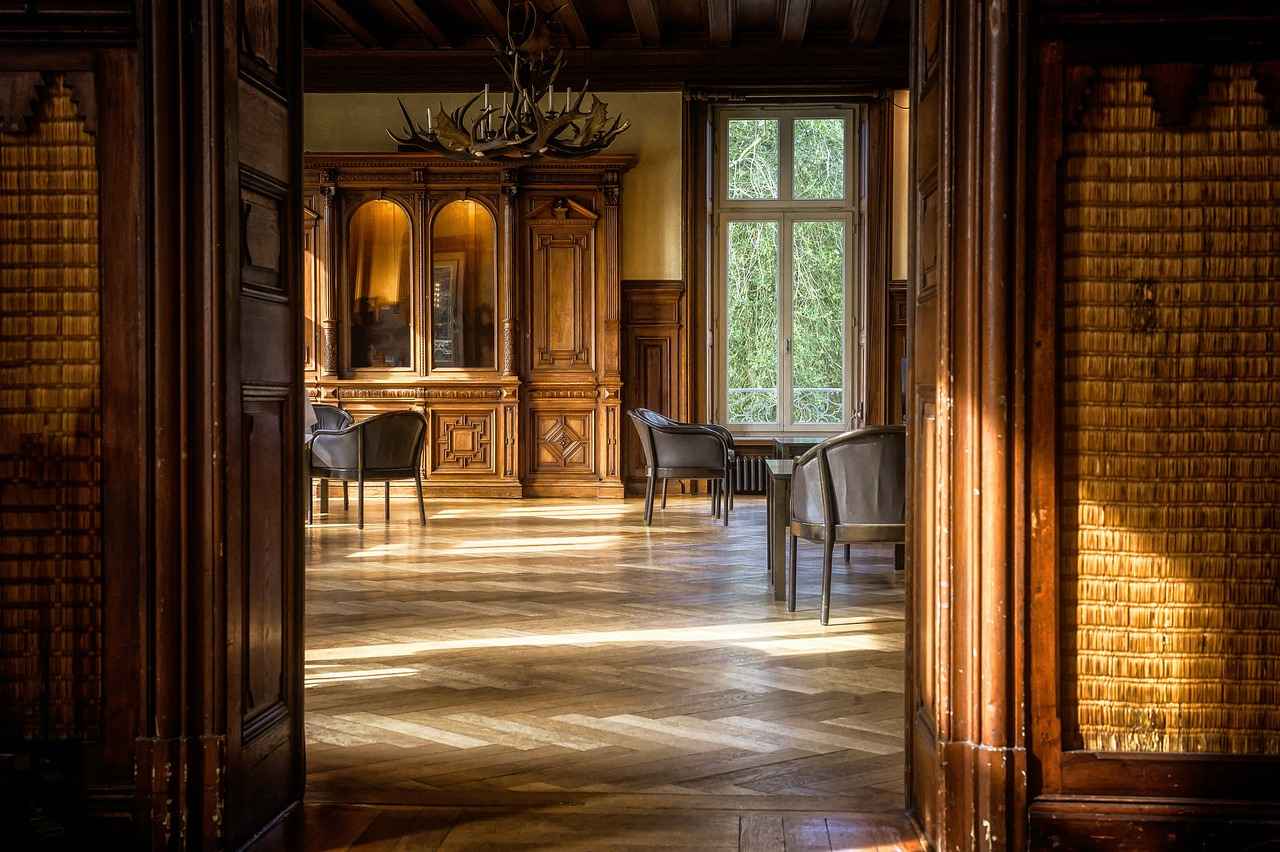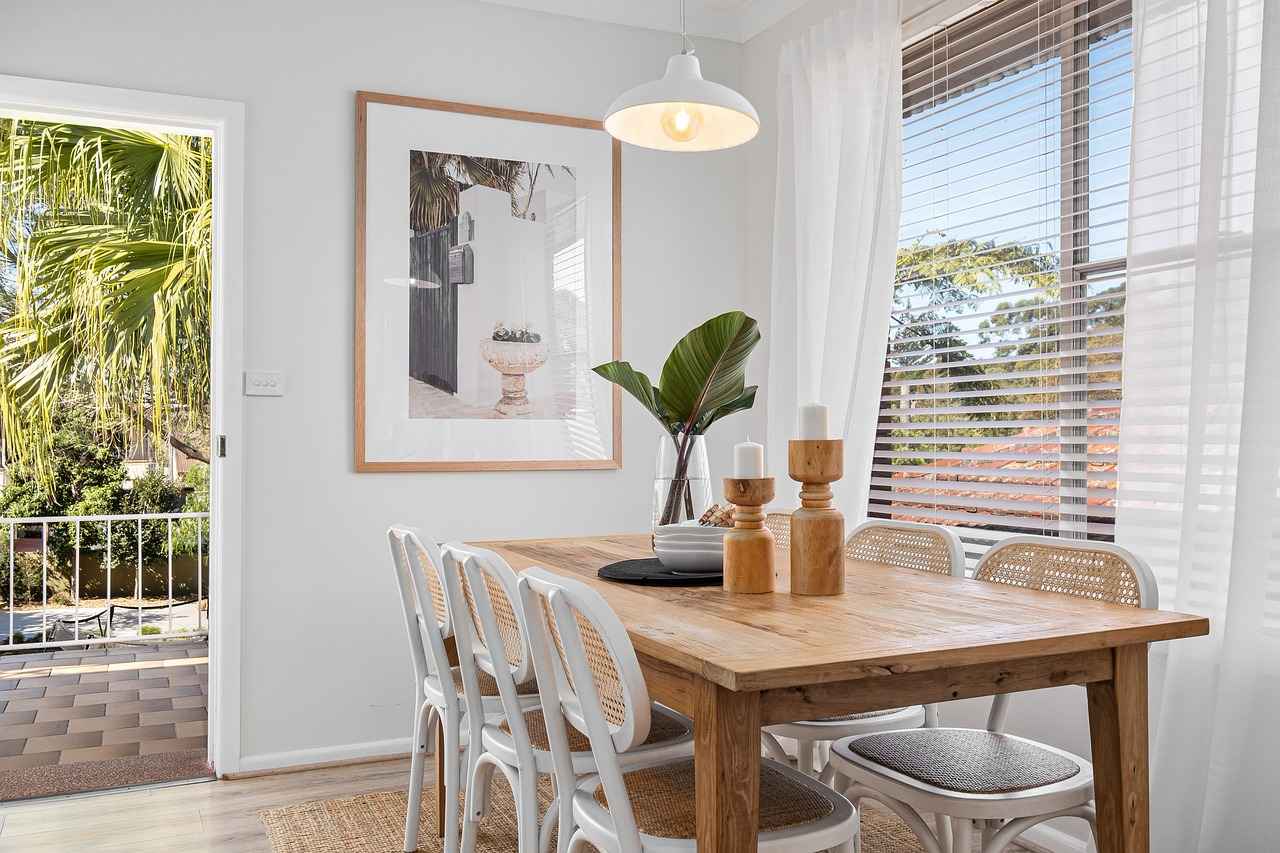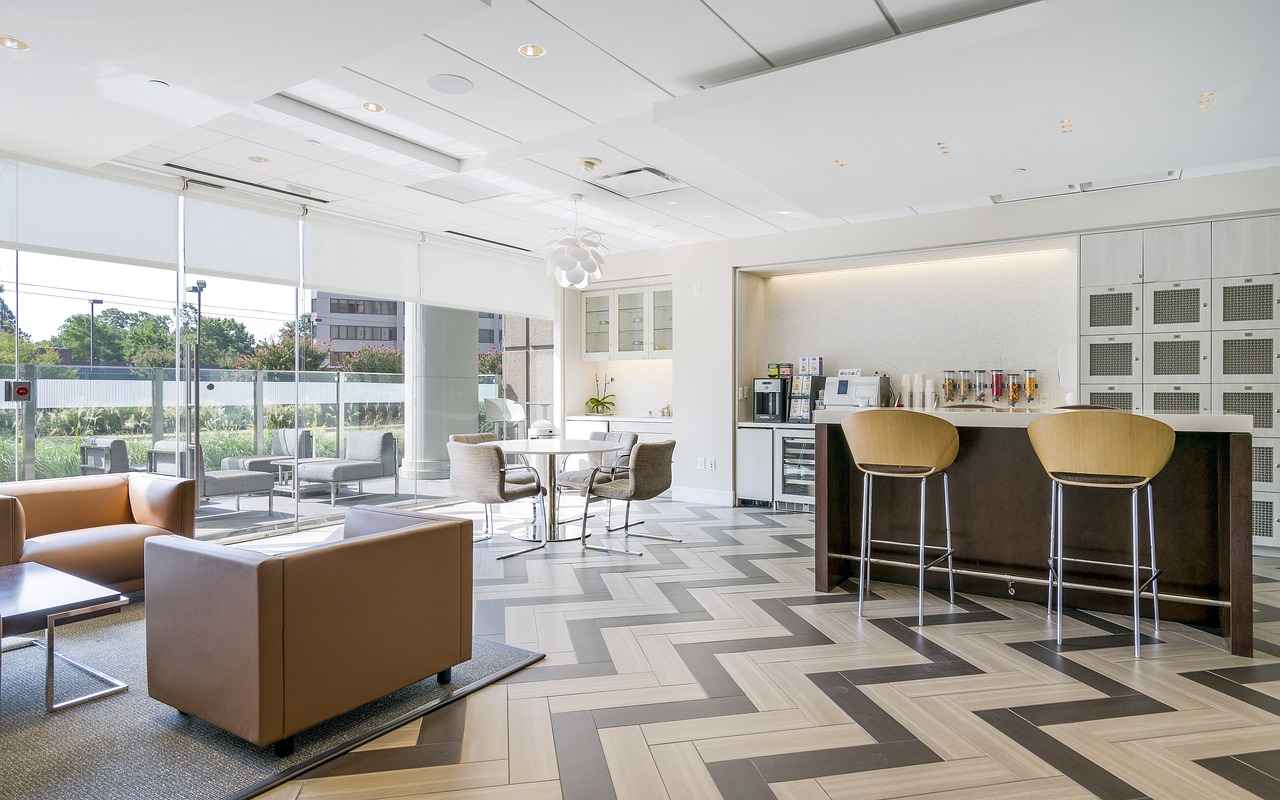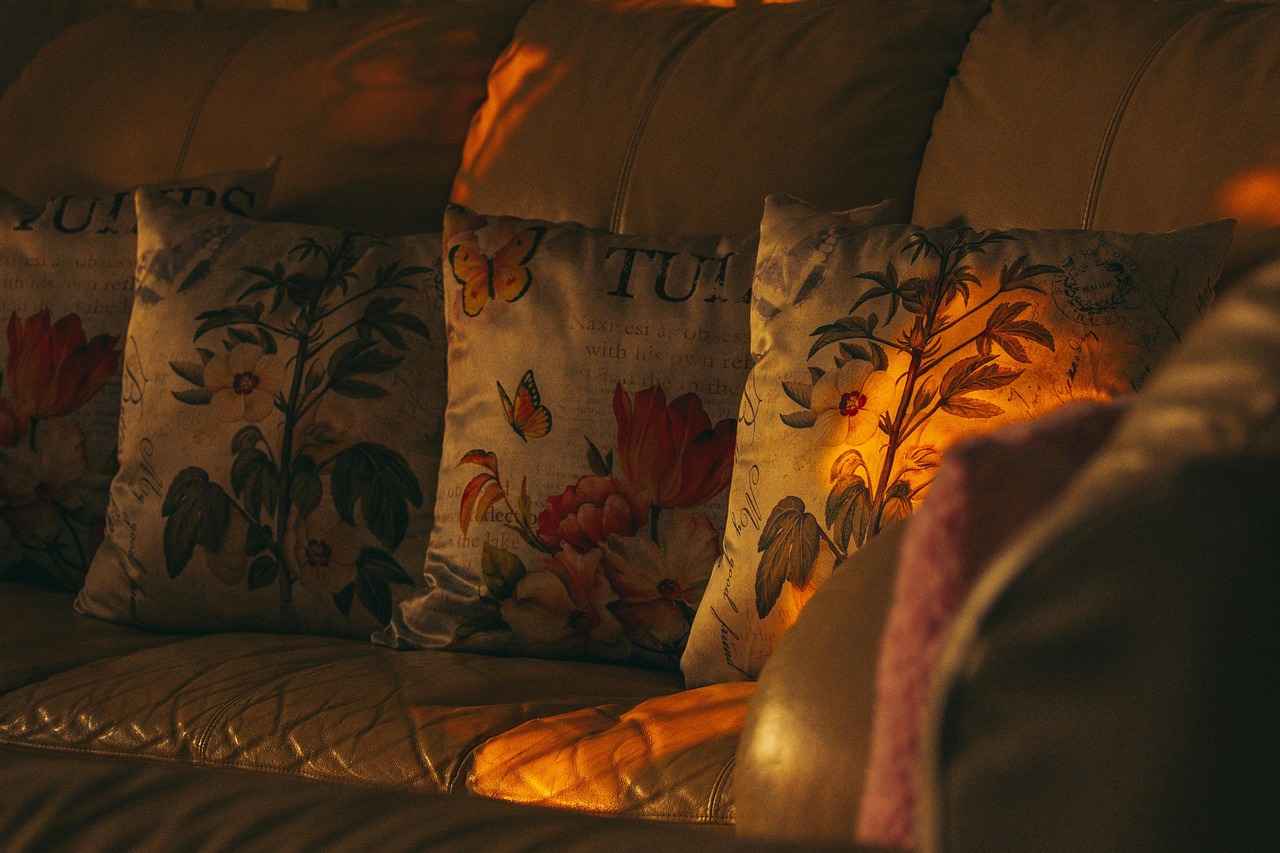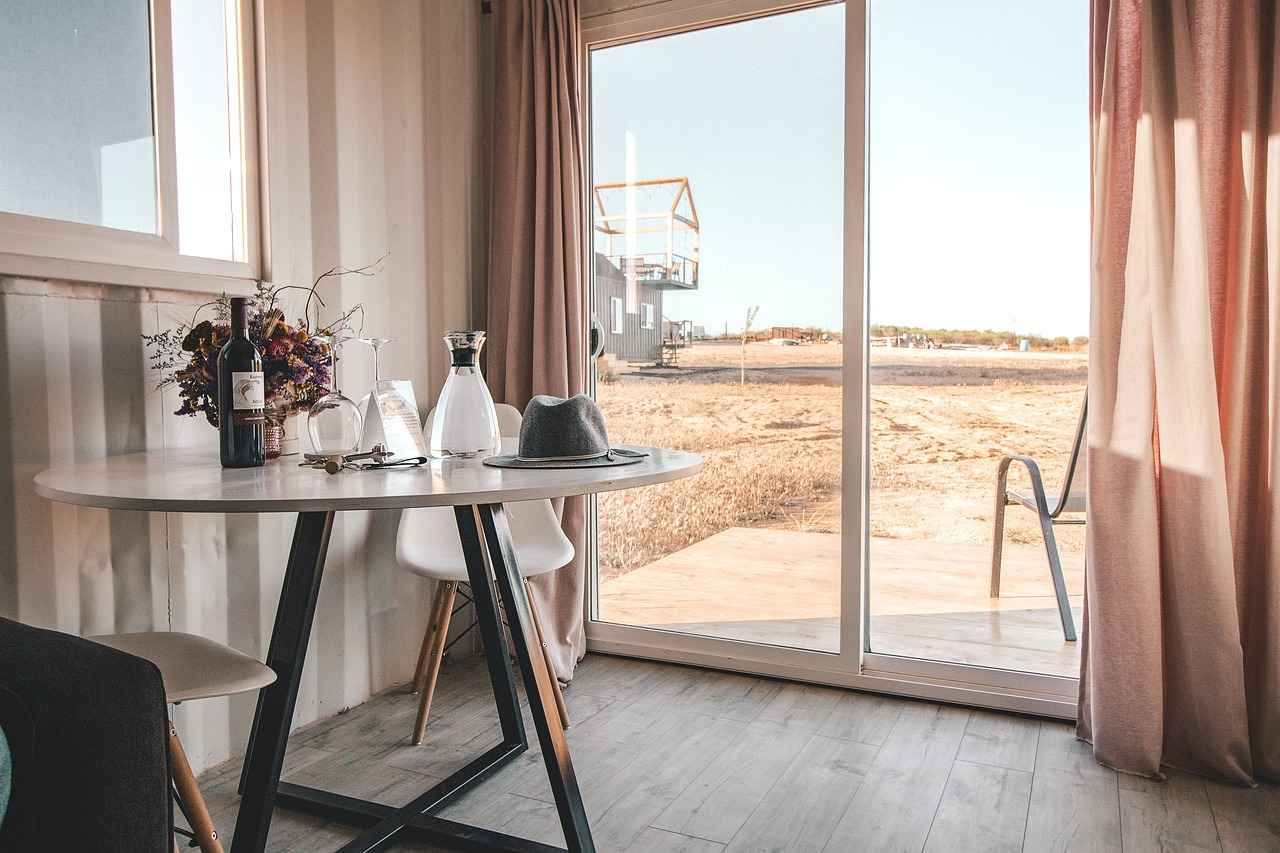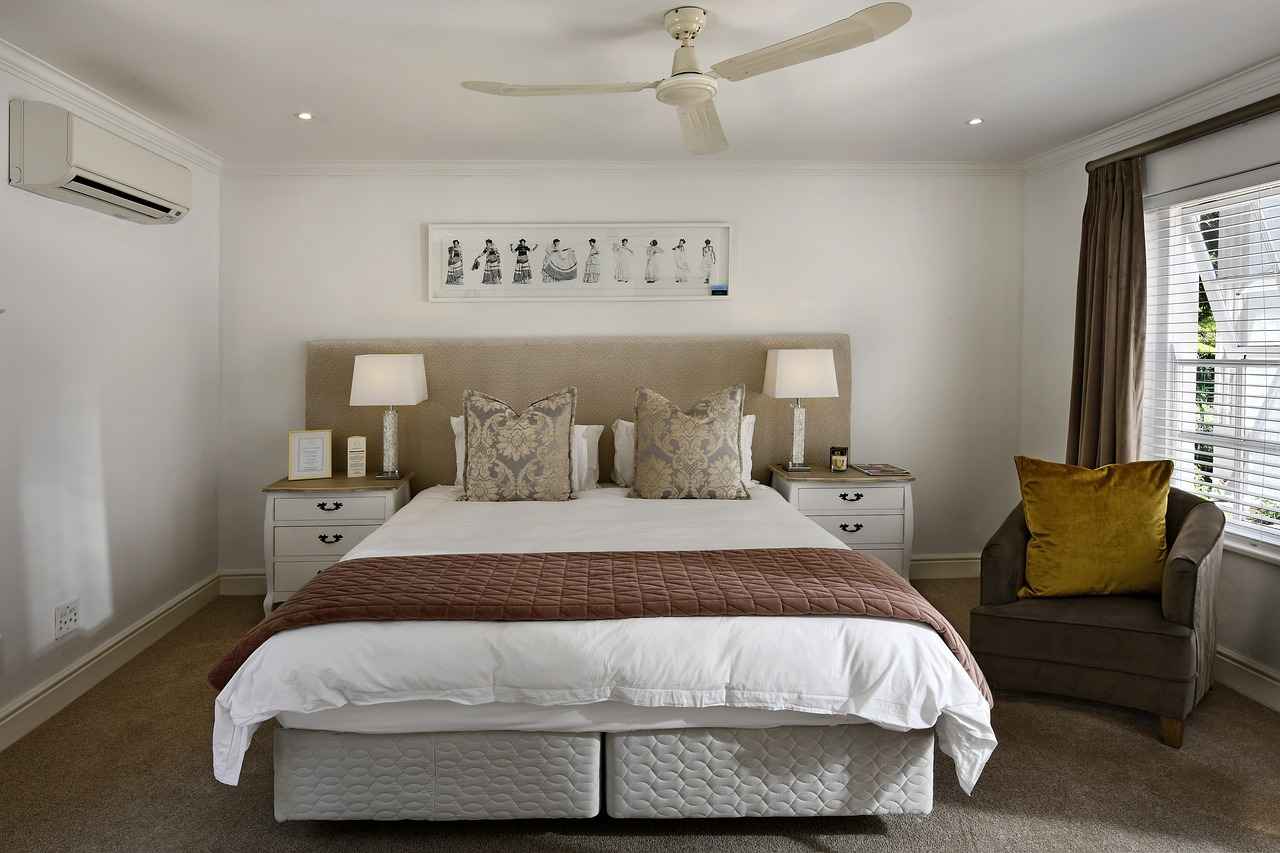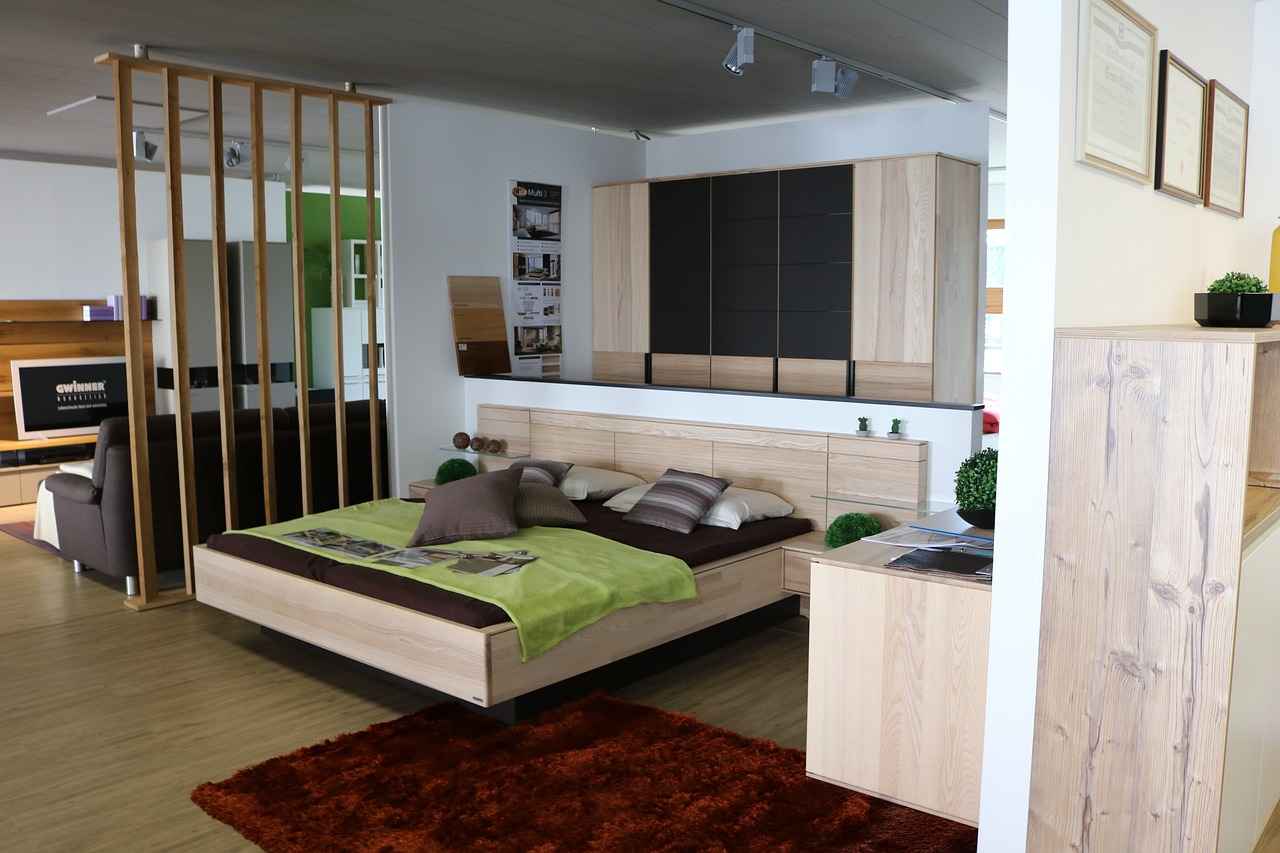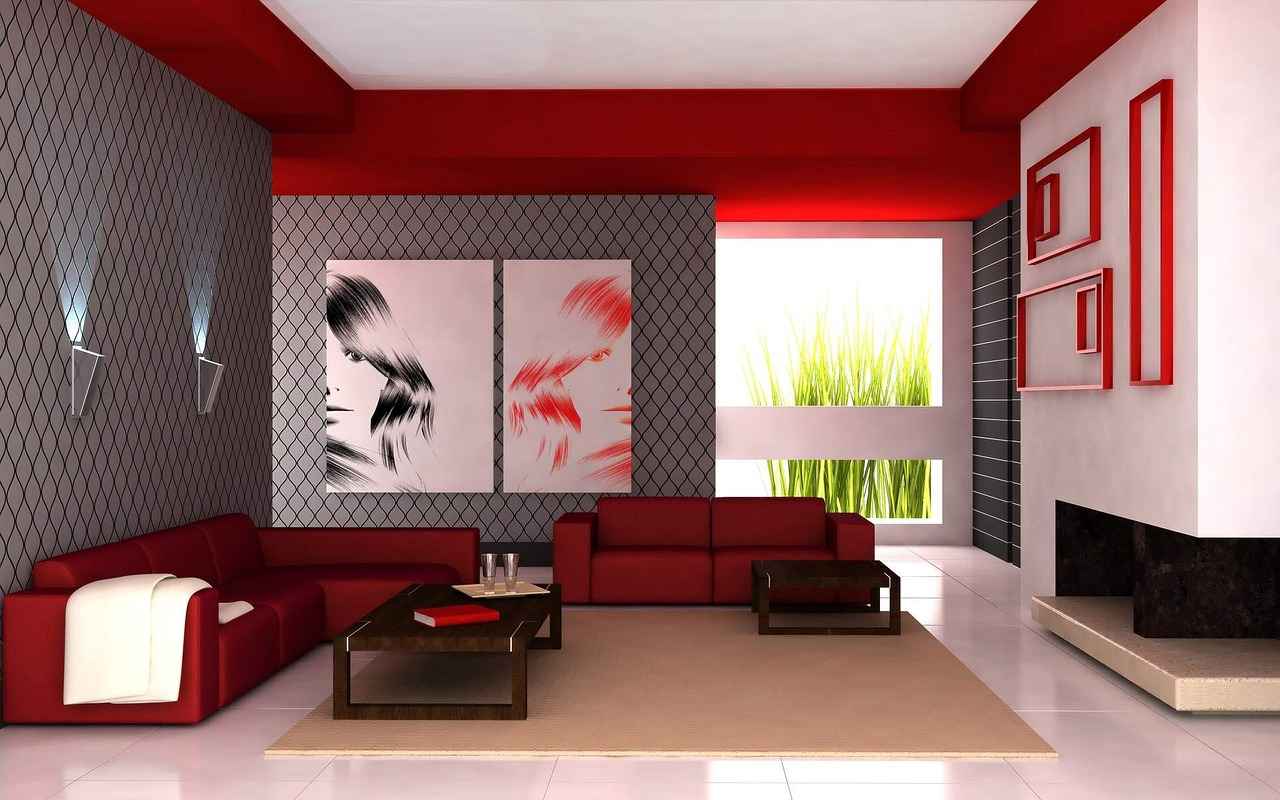This article provides a comprehensive guide on selecting the perfect room divider size to enhance your living space, ensuring functionality and aesthetic appeal.
Room dividers serve multiple purposes, from creating privacy to enhancing decor. They can transform an open area into distinct zones, making your space feel more organized and inviting. Understanding their benefits can help you make an informed choice for your space.
Various room divider types exist, including:
- Folding screens: Versatile and portable, ideal for temporary setups.
- Curtains: Soft and flexible, perfect for adding warmth.
- Bookshelves: Functional and decorative, offering storage and separation.
Each type offers unique advantages depending on your needs and style preferences.
Accurate measurements are crucial for selecting a room divider. Follow these steps:
1. Determine the area you want to divide.2. Measure the height and width of the space.3. Consider the flow of movement and accessibility.
These steps will ensure a perfect fit for your room divider.
Determining the right size involves considering the dimensions of your room and the intended use of the divider. Here are some guidelines:
- Height: A standard height for room dividers is between 5 to 7 feet, which generally provides adequate privacy without overwhelming the space.
- Width: The width should be proportional to the area. A divider that is too wide can obstruct movement, while one that is too narrow may not effectively define the space.
Material choice impacts both aesthetics and functionality. Consider the following options:
- Wood: Offers warmth and durability, suitable for traditional settings.
- Metal: Provides a modern aesthetic and is typically more durable.
- Fabric: Adds texture and softness, ideal for cozy environments.
The style of your room divider should harmonize with your existing decor. Consider factors like color, texture, and design to select a divider that enhances your overall aesthetic.
Placement is key to maximizing the functionality of your room divider. Here are some strategic positioning tips:
- Place the divider in a way that it does not block natural light.
- Consider the flow of movement; ensure it does not obstruct pathways.
- Use dividers to create cozy nooks without closing off the entire space.
Room dividers can serve multiple purposes, including:
- Creating temporary offices in living rooms.
- Defining dining areas in open floor plans.
- Providing privacy in shared spaces.
Proper maintenance can extend the life of your room divider. Here are some care tips:
- For wooden dividers, use a soft cloth and wood polish.
- Metal dividers can be cleaned with mild soap and water.
- Fabric dividers should be vacuumed regularly and spot cleaned as needed.
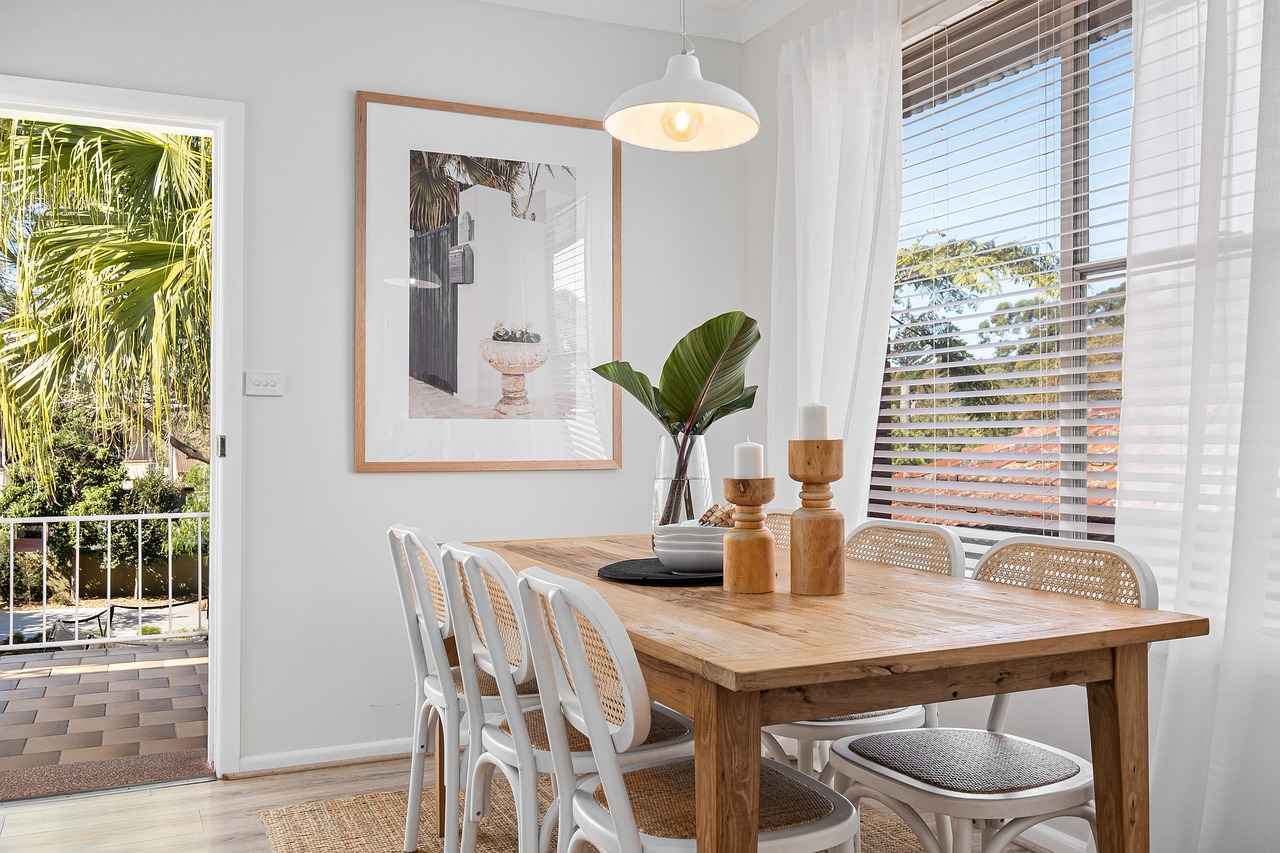
Why Choose a Room Divider?
When it comes to enhancing the functionality and aesthetics of your living space, room dividers are an invaluable asset. They serve not only as a means to separate areas within a room but also contribute significantly to the overall decor. In this section, we will explore the numerous benefits of incorporating room dividers into your home, helping you understand why they are a wise choice for any space.
Room dividers serve multiple purposes, from creating privacy to enhancing decor. Understanding their benefits can help you make an informed choice for your space. Here are some key reasons to consider:
- Privacy Creation: One of the primary functions of room dividers is to offer privacy. Whether you need a quiet nook for work or a secluded area for relaxation, a room divider can effectively shield you from distractions.
- Space Definition: In open-plan living spaces, room dividers help define different areas, making it easier to distinguish between living, working, and dining zones. This can enhance the functionality of your home.
- Decor Enhancement: A well-chosen room divider can serve as a striking focal point in a room. From elegant folding screens to stylish curtains, these dividers can complement your existing decor and add a touch of personality to your space.
- Flexibility: Room dividers are versatile and can be easily moved or adjusted based on your needs. This flexibility allows you to change the layout of your space without the need for permanent renovations.
- Sound Absorption: Certain room dividers, particularly those made of fabric or upholstered materials, can help absorb sound, contributing to a quieter and more serene environment.
- Storage Solutions: Some room dividers, such as bookshelves, offer additional storage space while serving their primary function. This dual-purpose feature is particularly beneficial in smaller homes.
When selecting a room divider, consider your specific needs and the atmosphere you want to create. The right divider can transform a chaotic space into an organized and aesthetically pleasing environment. Additionally, think about the style and material of the divider, as these elements will significantly influence the overall look and feel of your room.
In conclusion, the benefits of room dividers extend beyond mere aesthetics. They provide essential functionality, enhance privacy, and contribute to the overall ambiance of your living space. By understanding their various advantages, you can make a more informed decision when incorporating them into your home.
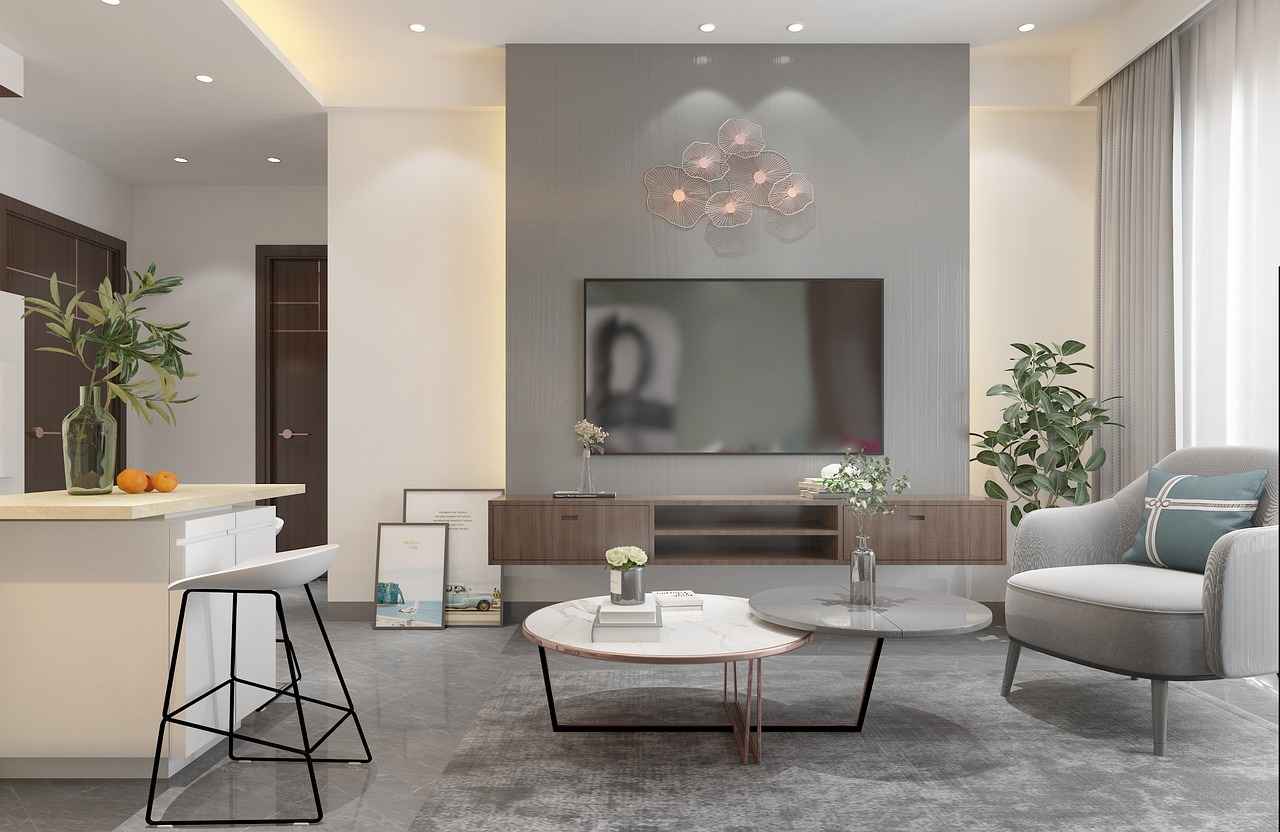
What Are the Different Types of Room Dividers?
When it comes to enhancing your living space, room dividers are versatile solutions that cater to various needs and styles. Understanding the different types of room dividers can help you choose the one that best fits your requirements. Below, we explore some popular options, highlighting their unique advantages and potential applications.
- Folding Screens: These are perhaps the most traditional form of room dividers. Folding screens come in various designs, from ornate to minimalist, and can be easily moved and adjusted. Their primary advantage is flexibility; you can quickly change the layout of your space. They are perfect for temporary divisions, such as creating a cozy reading nook or a private workspace.
- Curtains: Utilizing curtains as room dividers adds a soft touch to any space. They are available in numerous colors and fabrics, allowing for personalization to match your decor. Curtains can create a sense of privacy while also allowing light to filter through, making them ideal for open-concept homes. Additionally, they can be drawn back when not in use, providing a spacious feel.
- Bookshelves: Combining functionality with aesthetics, bookshelves serve as excellent room dividers. They not only separate areas but also provide storage and display space for books, plants, and decorative items. This dual-purpose feature makes them a popular choice for home offices or living rooms, where organization and style are essential.
- Glass Partitions: For a modern and sleek look, glass partitions are an excellent choice. They allow natural light to flow between spaces, maintaining an open feel while still defining areas. Glass dividers are often used in offices or contemporary homes, providing a clean and airy atmosphere.
- Sliding Panels: Similar to curtains, sliding panels can be moved to open or close off a space. They are often made of wood or fabric and are great for larger areas where a more permanent solution is desired. Sliding panels can effectively create separate zones without the bulkiness of traditional walls.
- Room Divider Shelves: These are specifically designed to divide spaces while offering storage solutions. They can be both functional and decorative, often featuring open shelving on one side and closed storage on the other. This type of divider is particularly useful in studios or small apartments where maximizing space is crucial.
Each type of room divider has its own set of benefits and can be chosen based on individual needs, style preferences, and the specific layout of your space. Whether you prioritize flexibility, aesthetics, or storage, there is a room divider that can enhance your living experience. By understanding the various options available, you can make an informed decision that aligns with your functional and decorative goals.
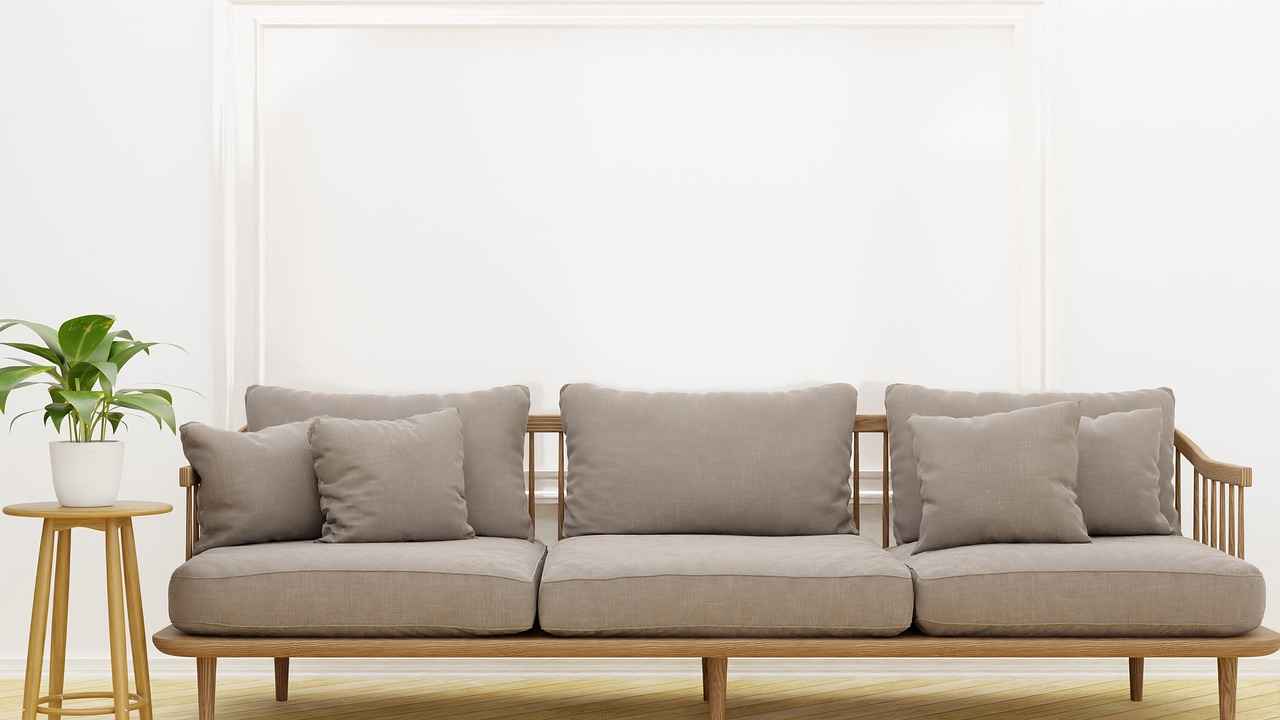
How to Measure Your Space for a Room Divider?
When it comes to enhancing your living space, accurate measurements are essential for selecting the right-sized room divider. This guide will walk you through the steps to measure your area effectively, ensuring a perfect fit for your chosen divider.
Choosing a room divider without proper measurements can lead to frustration and inefficiency. A divider that is too large can overwhelm your space, while one that is too small may not provide the privacy or definition you desire. By measuring accurately, you can ensure that your room divider complements your decor and serves its intended purpose.
- Identify the Area: Start by determining the specific area where you want to place the room divider. Consider the function of the divider—whether it’s for privacy, decoration, or space definition.
- Measure Width: Use a tape measure to find the width of the space. Measure from one wall to the other, accounting for any furniture or architectural features that might affect the divider’s placement.
- Measure Height: The height of the room divider is equally important. Measure from the floor to the ceiling, or to the height you envision for the divider. Consider how tall you want it to be in relation to the surrounding furniture.
- Consider Depth: If you’re choosing a more substantial divider, such as a bookshelf or a folding screen, measure the depth to ensure it won’t obstruct pathways or flow in your space.
- Account for Accessories: If your divider will have additional features (like hooks or shelves), make sure to measure those as well to avoid any surprises during installation.
To ensure your measurements are accurate:
- Double-Check: Always measure twice to confirm accuracy. This helps prevent costly mistakes.
- Use a Level: For height measurements, use a level to ensure that your measurements are straight and true.
- Visualize the Space: Use tape or string to outline where the divider will go. This can help you visualize the space and make adjustments if necessary.
Incorrect measurements can lead to disappointment and additional costs. A room divider that doesn’t fit properly can disrupt the flow of your space and create an unbalanced aesthetic. In some cases, you may need to return or exchange the divider, which can be time-consuming and frustrating.
Taking the time to measure your space accurately is crucial for selecting the right room divider. By following these steps and tips, you can ensure that your divider not only fits perfectly but also enhances the functionality and beauty of your living area. Remember, a well-measured space leads to a more harmonious home.

What Size Should Your Room Divider Be?
Choosing the right size for your room divider is essential for achieving both functionality and aesthetic appeal. Determining the appropriate dimensions involves a careful assessment of your room’s layout, the intended use of the divider, and your personal style preferences. Below, we explore key factors to consider when selecting the optimal height and width for your room divider.
- Room Dimensions: Start by measuring the dimensions of your room. Consider both the length and height of the space where you plan to place the divider. A divider that is too large can overwhelm a small room, while one that is too small may not effectively separate spaces.
- Intended Use: Think about how you plan to use the divider. If your goal is to create a private workspace, a taller divider may be necessary for added privacy. Conversely, if you’re looking to define a living area without completely closing it off, a shorter divider may suffice.
- Visual Balance: Consider the visual balance of the room. A divider should complement the existing furniture and decor. A large divider in a room filled with minimalistic furniture can create a jarring contrast, while a smaller divider may get lost in a busy space.
- Height Recommendations: Standard height for room dividers typically ranges from 4 to 6 feet. This range allows for effective separation while maintaining an open feel. If you want to create a more enclosed space, consider a height of 6 to 8 feet.
- Width Considerations: The width of the divider can significantly impact the flow of movement within the room. A width of 3 to 5 feet is often suitable for most spaces, allowing for easy navigation without obstructing pathways. However, if you’re using a folding screen or bookshelf as a divider, ensure it can be easily moved or adjusted as needed.
When selecting the size of your room divider, also take into account the style and material of the divider. Some materials, like fabric, can create a softer look and may appear less imposing, allowing for a slightly larger size without overwhelming the space. In contrast, a solid wood or metal divider might require more careful consideration of size to maintain balance in the room.
Ultimately, the goal is to find a size that meets your functional needs while enhancing the overall aesthetic of your living space. By taking the time to measure your room and consider how you want to use the divider, you can make an informed decision that will contribute to a harmonious and well-designed environment.
Standard Height Recommendations
When selecting a room divider, one of the most critical aspects to consider is its height. The right height not only enhances the functionality of the divider but also contributes to the overall visual balance of your space. This section delves into for room dividers, ensuring you make an informed choice that aligns with your design goals.
Room dividers come in various heights, typically ranging from 4 to 8 feet. The choice of height largely depends on the intended use of the divider and the specific layout of your room. For instance, if you aim to create a sense of privacy, a taller divider may be more effective. Conversely, if your goal is to delineate spaces while maintaining an open feel, a shorter divider could be ideal.
- 4-5 Feet: Ideal for creating a low barrier between spaces, perfect for open-concept living areas.
- 6 Feet: A versatile height that provides a good balance of privacy and openness, suitable for home offices or bedrooms.
- 7-8 Feet: Best for maximum privacy, often used in commercial settings or larger living spaces where separation is needed.
While standard height recommendations provide a useful guideline, several factors can influence your decision:
- Ceiling Height: Consider the height of your ceilings. A divider that is too tall can overwhelm a room, while one that is too short may not serve its purpose effectively.
- Room Function: The function of the space plays a significant role. For example, a divider in a dining area may need to be lower to maintain an inviting atmosphere.
- Design Style: Your overall decor style should also guide your height choice. Sleek, modern designs may benefit from taller dividers, while rustic styles may look better with shorter options.
Achieving visual balance is crucial when selecting the height of your room divider. A well-chosen height can enhance the aesthetic appeal of your space, making it feel more cohesive and thoughtfully designed. When in doubt, consider the proportions of your furniture and other elements in the room. A divider that complements these features will create a harmonious environment.
Before committing to a specific height, it can be beneficial to test different heights in your space. Use temporary solutions like fabric or cardboard to mimic the divider’s height. This hands-on approach allows you to visualize how the divider will look and function in your room, ensuring you make the best choice for your needs.
In conclusion, selecting the right height for your room divider is a vital step in enhancing both the functionality and visual appeal of your space. By following standard height recommendations and considering factors such as room function, ceiling height, and design style, you can create a well-balanced environment that meets your needs.
Width Considerations for Different Spaces
When designing a space, the width of your room divider plays a crucial role in determining the overall flow and accessibility of the area. Choosing the appropriate width is essential for achieving both functional and aesthetic goals. This section will explore how to select the right width based on your room layout and design aspirations.
The width of a room divider can significantly influence how a space feels and functions. A divider that is too wide may create a sense of confinement, while one that is too narrow may fail to provide the desired separation. It’s essential to strike a balance that complements your room’s dimensions and enhances its usability.
Before selecting a width for your room divider, assess your room layout. Consider the following factors:
- Room Size: Measure the dimensions of your space to determine how much area you can allocate for the divider.
- Furniture Arrangement: Think about the placement of existing furniture and how the divider will interact with these elements.
- Traffic Flow: Ensure that the divider does not obstruct pathways or create bottlenecks.
Different uses for room dividers require varying widths. Here are some guidelines:
- Privacy Screens: For creating private areas, a width of at least 4 to 6 feet is recommended to ensure adequate coverage.
- Open Spaces: In larger, open-concept areas, consider using dividers that are 6 to 8 feet wide to effectively delineate spaces without overwhelming the room.
- Temporary Dividers: If you need a flexible solution, such as for a home office that can be easily reconfigured, widths of 3 to 4 feet can work well.
Your design goals should also dictate the width of your room divider. If your aim is to create an intimate nook or cozy reading area, a wider divider can help establish a more enclosed feel. Conversely, if you want to maintain an airy atmosphere, opt for a narrower divider that allows light to filter through.
The material of your room divider can also affect its perceived width. For example, a transparent glass divider may appear less bulky than a solid wood option, allowing you to use a wider divider without making the space feel cramped. Similarly, fabric dividers can be hung with a little extra width to create a soft, flowing look.
Before making a final decision, consider testing the width of your chosen divider. You can use painter’s tape to outline the dimensions of the divider on the floor. This will help you visualize how the divider will fit within the space and allow you to adjust the width as necessary.
Ultimately, selecting the right width for your room divider involves a careful consideration of your room layout, design goals, and the intended use of the divider. By taking the time to assess these factors, you can choose a divider that enhances both the functionality and beauty of your space.
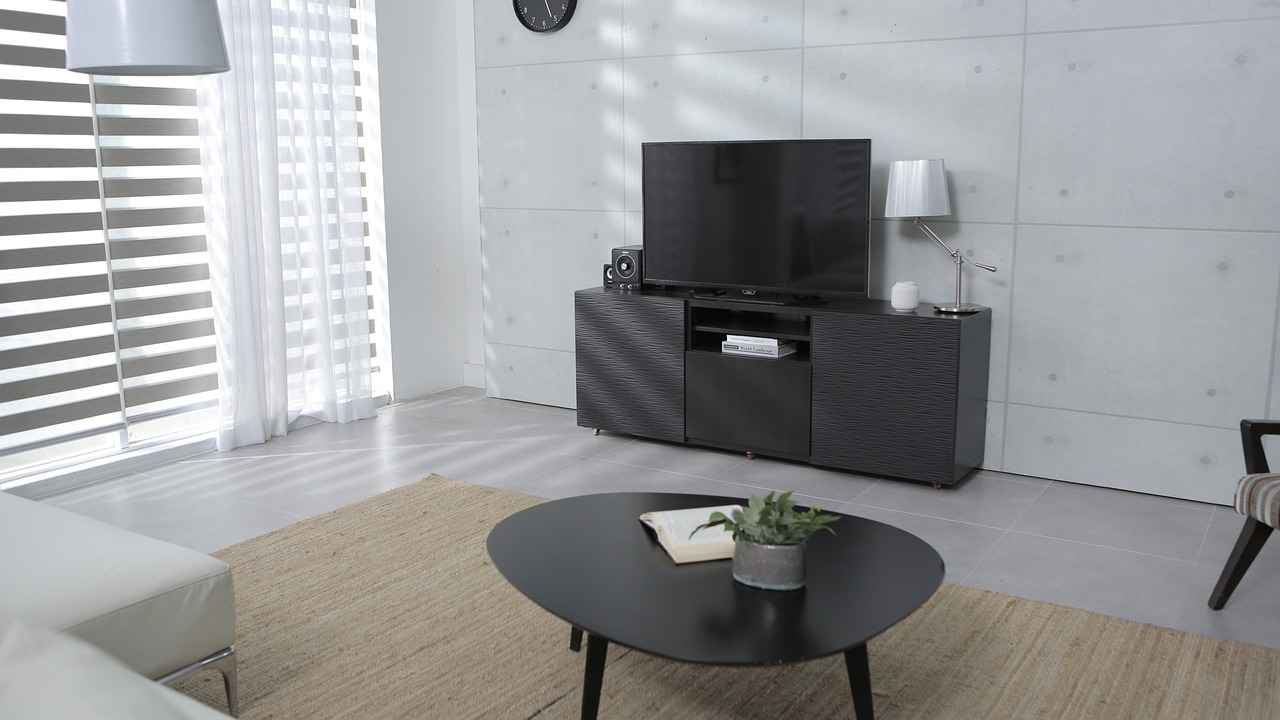
How to Choose the Right Material for Your Room Divider?
Choosing the right material for your room divider is essential for achieving both aesthetic appeal and functional utility in your living space. The material you select will not only influence the overall look but also the performance of the divider in terms of privacy, sound absorption, and durability. This guide explores various materials commonly used for room dividers and their respective benefits, helping you make an informed decision that suits your needs.
- Wood: Wood is a classic choice that adds warmth and elegance to any room. It is sturdy and can be crafted into various designs, from traditional to modern. Additionally, wooden dividers can provide excellent sound insulation, making them ideal for creating quiet areas.
- Metal: Metal dividers offer a sleek, modern aesthetic. They are durable and can be easily shaped into intricate designs. Metal is also low maintenance and can withstand wear and tear, making it suitable for high-traffic areas.
- Fabric: Fabric dividers provide a soft, inviting atmosphere. Available in various colors and patterns, they can easily complement your decor. They are lightweight and can be easily moved or adjusted, offering flexibility in space management.
- Glass: Glass dividers create an open and airy feel while still providing a degree of separation. They allow light to flow through, making spaces feel larger. Frosted or textured glass options can enhance privacy without sacrificing brightness.
- Plastic: Plastic is a versatile and budget-friendly option. It can mimic the appearance of other materials and is often used in contemporary designs. Plastic dividers are lightweight and easy to clean, making them practical for various environments.
The material of your room divider significantly impacts the aesthetic appeal of your space. For instance, a wooden divider can evoke a rustic or traditional feel, while a metal divider might contribute to a more industrial or modern vibe. When selecting a material, consider the existing decor and the atmosphere you wish to create. For a cohesive look, choose materials that harmonize with your furniture and color scheme.
Beyond aesthetics, different materials offer unique functional benefits:
- Durability: Metal and wood are generally more durable than fabric or plastic, making them suitable for high-traffic areas.
- Sound Absorption: Wood and fabric are better at absorbing sound, providing more privacy and reducing noise levels in shared spaces.
- Flexibility: Fabric and lightweight plastic dividers can be easily moved or adjusted, allowing for adaptable space configurations.
- Maintenance: Metal and plastic require minimal maintenance, while wood may need periodic treatment to maintain its finish.
When selecting the right material for your room divider, consider the following factors:
- Purpose: Determine the primary function of the divider. Is it for privacy, decoration, or space management?
- Style: Align the material choice with your overall decor style. Consider whether you want a bold statement piece or a subtle addition.
- Budget: Set a budget for your divider. Materials like wood and glass can be more expensive, while fabric and plastic options are often more affordable.
- Space: Assess the dimensions and layout of your room. Lighter materials may be better for smaller spaces, while heavier materials can anchor larger areas.
By carefully considering these aspects, you can select a material that not only meets your functional needs but also enhances the visual appeal of your space.
Wood vs. Metal: Which is Better?
When it comes to selecting a room divider, the choice of material plays a significant role in both functionality and aesthetic appeal. Two popular options are wood and metal, each offering a unique set of advantages and disadvantages. Understanding these can help you make an informed decision based on your style and needs.
- Warmth and Aesthetics: Wood brings a natural warmth to any space. Its rich textures and grains can enhance the overall decor, making it a popular choice for cozy and inviting environments.
- Durability: High-quality wood can last for years, providing a sturdy and reliable option for dividing spaces.
- Versatility: Wood can be easily customized with stains or paints, allowing you to match it with existing furniture or decor styles.
- Weight: Wood dividers can be heavy, making them less portable than other materials.
- Cost: Depending on the type of wood, prices can vary significantly, with some varieties being quite expensive.
- Maintenance: Wood requires regular maintenance to prevent warping, cracking, or damage from moisture.
- Modern Appeal: Metal dividers offer a sleek and contemporary look, perfect for modern interiors.
- Lightweight: Generally, metal dividers are lighter than wood, making them easier to move and reposition.
- Durability: Metal is resistant to damage from moisture and pests, ensuring a longer lifespan with minimal upkeep.
- Cold Aesthetic: Metal can sometimes feel cold or industrial, which may not suit all decor styles.
- Scratches and Dents: Metal surfaces can be prone to scratches and dents, which can affect their appearance over time.
- Limited Customization: Unlike wood, metal is less customizable in terms of color and finish.
When choosing between wood and metal for your room divider, consider the following:
- Style: What aesthetic are you aiming for? If you prefer a warm, natural look, wood may be the better choice. For a contemporary feel, metal might be more appropriate.
- Functionality: Consider how you plan to use the divider. If you need something that can be easily moved, metal may be preferable.
- Budget: Evaluate your budget. Wood can be more expensive, especially if you opt for high-quality types.
Ultimately, both wood and metal have their own set of pros and cons. By carefully considering your personal style, needs, and the specific characteristics of each material, you can choose the right room divider that complements your space beautifully.
Fabric Options for Soft Dividers
When it comes to enhancing the aesthetic and functionality of your space, fabric dividers are an excellent choice. These versatile elements not only provide a sense of privacy but also add warmth and texture to any environment. In this section, we will explore various fabric options for soft dividers, their suitability for different settings, and how they can complement your design scheme.
Fabric dividers offer a unique blend of style and practicality. Unlike rigid dividers, fabric options can be easily moved, adjusted, or replaced, making them ideal for dynamic spaces that require flexibility. Additionally, the soft texture of fabric can help to absorb sound, creating a more peaceful atmosphere.
- Cotton: Known for its softness and versatility, cotton is a popular choice for fabric dividers. It comes in various colors and patterns, making it easy to match with existing decor.
- Linen: Offering a more sophisticated look, linen is durable and has a natural texture that adds elegance to any space. It’s particularly suitable for formal settings.
- Velvet: For a touch of luxury, velvet fabric dividers provide a rich texture and depth. They are perfect for creating a cozy corner or a private nook.
- Sheer Fabrics: If you want to maintain an open feel while still defining spaces, sheer fabrics are an excellent choice. They allow light to filter through while providing a degree of separation.
When selecting fabric dividers, it’s essential to consider the environment in which they will be used:
- Residential Spaces: In homes, fabric dividers can create cozy reading nooks, separate play areas for children, or even temporary guest spaces.
- Offices: In professional settings, fabric dividers can help create private workstations without the permanence of walls, promoting collaboration while maintaining individual focus.
- Event Spaces: For weddings or parties, fabric dividers can create intimate areas for guests, enhancing the overall ambiance of the event.
When choosing fabric dividers, consider the color scheme and pattern of your space. Opt for colors that either complement or contrast with your existing decor. Patterns can add visual interest, but be cautious not to overwhelm the space. Additionally, think about the weight of the fabric; heavier fabrics can provide more privacy, while lighter fabrics may allow for more light and openness.
To keep your fabric dividers looking their best, regular maintenance is key. Most fabric types can be machine washed or spot cleaned, but always check the care label for specific instructions. For delicate fabrics like velvet or linen, consider professional cleaning to preserve their texture and appearance.
In conclusion, fabric dividers are a stylish and functional addition to any space. By exploring various fabric options and understanding their suitability for different environments, you can create a space that is both inviting and practical.
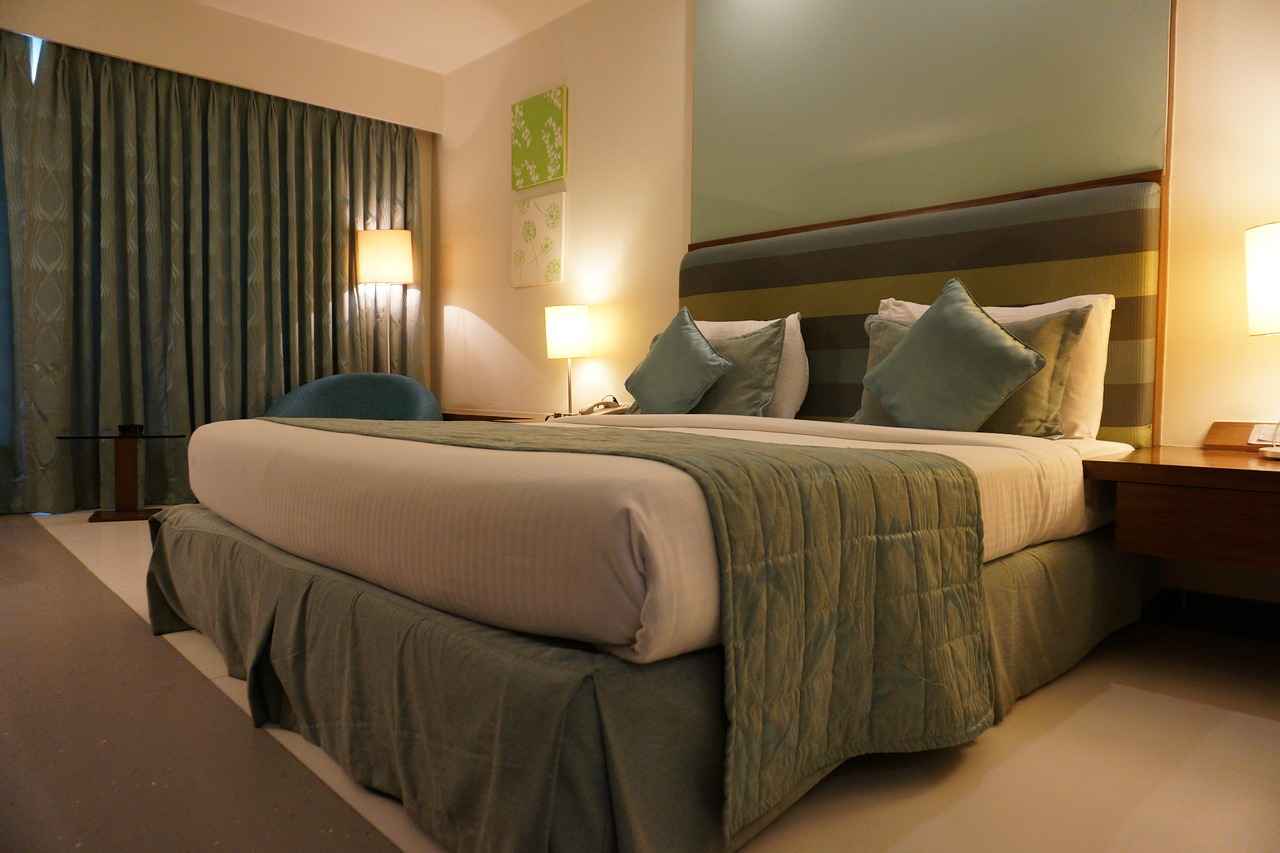
What Style of Room Divider Complements Your Decor?
When it comes to interior design, the style of your room divider plays a crucial role in enhancing the overall aesthetic of your space. Choosing a divider that complements your existing decor can significantly affect the ambiance and functionality of your room. Below, we explore how to select the perfect room divider that not only serves its purpose but also aligns with your design vision.
Before selecting a room divider, it’s essential to identify your decor style. Are you leaning towards a modern, minimalist look, or do you prefer a more traditional, cozy atmosphere? Knowing your style will guide your choice of materials, colors, and designs.
- Folding Screens: These versatile dividers can easily be moved and stored. They come in various designs, from intricate patterns to sleek, modern finishes.
- Curtains: Soft fabric dividers add warmth and texture. They can be drawn aside when not in use, making them a flexible choice for any room.
- Bookshelves: A functional option that not only divides space but also provides storage and display space for books and decorative items.
The material of your room divider significantly influences its style and functionality. Here are some popular options:
- Wood: Offers a warm and classic look, perfect for traditional and rustic decor.
- Metal: Ideal for industrial or contemporary styles, providing a sleek and modern aesthetic.
- Fabric: Soft and inviting, fabric dividers can add a splash of color and texture to your space.
Color is a vital aspect of your room divider’s style. Consider choosing a divider that either matches or contrasts with your existing color palette. For example, if your room features neutral tones, a bold-colored divider can serve as a striking focal point. Alternatively, a divider in a similar shade can create a harmonious and cohesive look.
The design of your room divider should reflect your personal style. If your decor is minimalistic, consider a divider with clean lines and subtle textures. On the other hand, if your space is eclectic, opt for a screen with vibrant patterns or artistic elements that add character.
While the style is important, the functionality of your room divider should not be overlooked. Ensure that the divider you choose serves its intended purpose, whether it’s to create privacy, define spaces, or simply enhance visual appeal. A well-chosen divider can seamlessly blend style with practicality.
In conclusion, selecting a room divider that complements your decor involves understanding your style preferences, choosing the right materials, and considering color and design elements. By taking the time to assess these factors, you can find a divider that not only enhances your space but also reflects your personal taste and lifestyle. The right room divider will serve as a functional and stylish addition to your home, creating a beautifully defined yet harmonious environment.
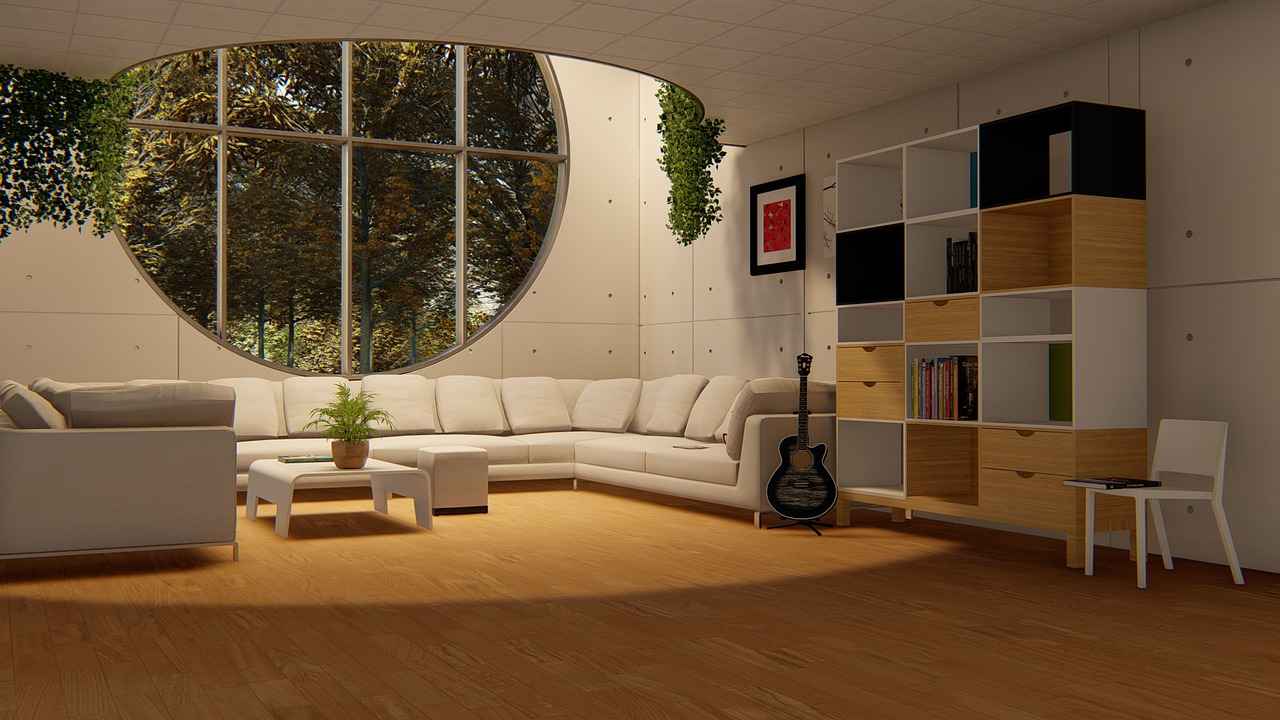
How to Position Your Room Divider Effectively?
When it comes to enhancing the functionality and aesthetics of your living space, strategic placement of your room divider is crucial. The way you position a room divider can transform a large, open area into distinct, usable spaces while still maintaining an open feel. Here are some essential tips to help you achieve the perfect placement for your room divider.
Before you decide on a location for your room divider, take a moment to assess your space. Consider the flow of movement within the room. Identify high-traffic areas and ensure that the divider does not obstruct pathways. A well-placed divider should enhance the functionality of the room without causing inconvenience.
One of the primary purposes of a room divider is to create defined spaces. For example, if you have a studio apartment, you might want to separate your sleeping area from your living space. Position the divider in a way that visually separates these areas without completely closing them off. This can be achieved by:
- Placing the divider at an angle to create a more dynamic layout.
- Using a shorter divider to maintain sight lines while still providing a sense of separation.
- Incorporating transparent materials that allow light to flow through.
While defining spaces is important, it’s equally essential to maintain an open feel. Here are some strategies to achieve this:
- Choose dividers with transparent or semi-transparent materials, such as glass or sheer fabrics, to allow light to pass through.
- Install the divider slightly away from the wall to create depth and a sense of openness.
- Consider using a folding screen that can be easily adjusted based on your needs.
Another effective strategy is to make use of vertical space. Tall room dividers can draw the eye upward, creating the illusion of a larger area. However, be cautious with height; too tall can feel oppressive. Aim for a height that complements the room’s proportions. Additionally, you can use the top of the divider for decorative elements or plants to enhance the aesthetic appeal.
Think about how the room divider can serve multiple purposes. For instance, a bookshelf can act as a divider while providing storage. Placing a divider with built-in shelves or hooks can help maximize your space and keep it organized.
Lighting plays a significant role in the effectiveness of your room divider placement. Ensure that the divider does not block natural light sources. Position it in a way that enhances the overall brightness of the room. If using a solid divider, consider placing it near a light source or using lamps to illuminate the area.
Finally, don’t be afraid to experiment with different layouts. Use painter’s tape to outline where the divider will go and visualize the space before making a final decision. This will help you understand how the divider will affect the room’s flow and functionality.
By following these strategic positioning tips, you can create defined spaces that enhance the functionality of your room divider while maintaining an open and inviting atmosphere. Remember that the goal is to strike a balance between separation and openness to create a harmonious living environment.
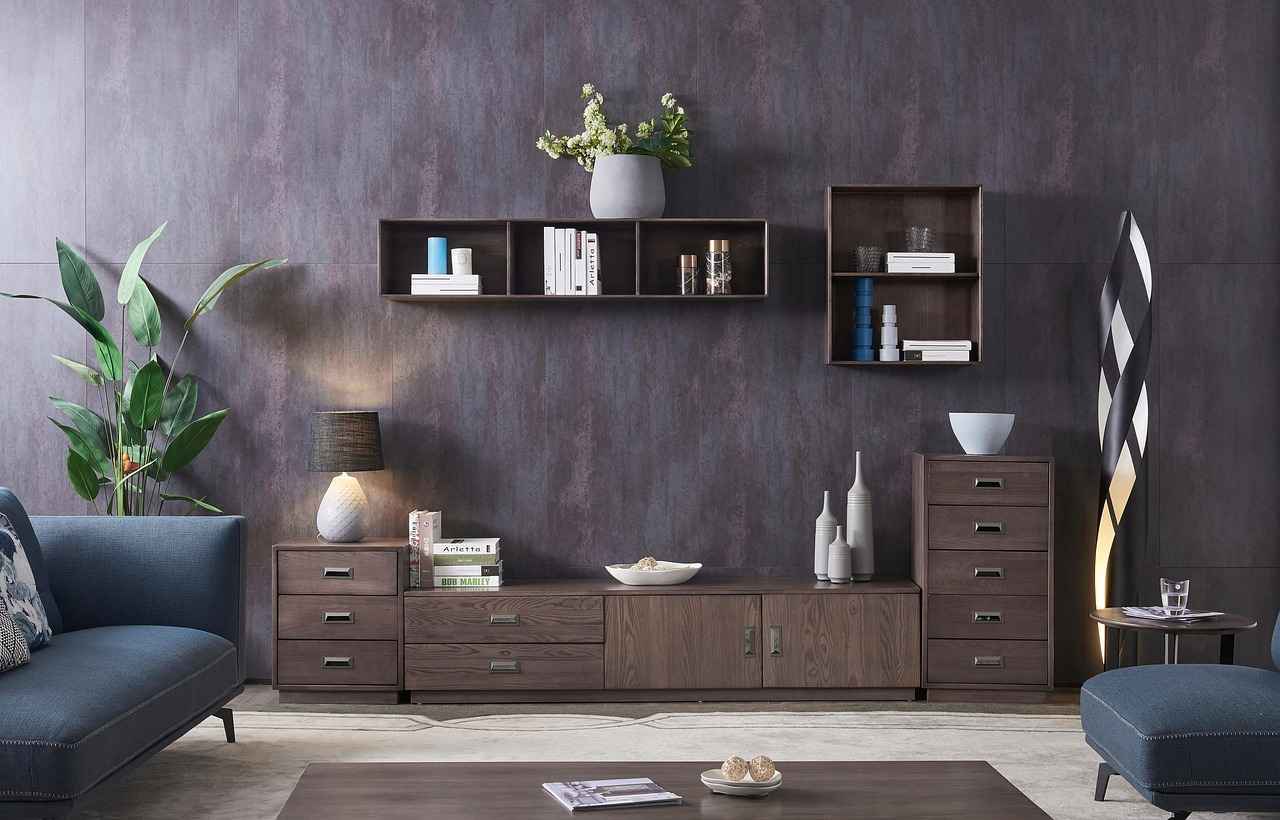
What Are the Best Uses for Room Dividers?
Room dividers are versatile tools that can significantly enhance the functionality and aesthetics of your living space. By understanding their best uses, you can create a more organized and inviting environment tailored to your needs.
In today’s remote work culture, temporary offices have become increasingly popular. Room dividers can transform a corner of your living room or bedroom into a dedicated workspace. By using a tall, freestanding divider, you can create a sense of privacy and focus, allowing you to concentrate on your tasks without distractions from the rest of your home.
Open floor plans are great for socializing but can sometimes lack defined areas. A room divider can effectively define your dining area, making it feel more intimate and inviting. Whether you choose a decorative screen or a shelving unit filled with plants and books, a room divider can help establish a clear transition from the dining space to the living area.
For those living in shared accommodations or with family members, maintaining personal space is essential. Room dividers can provide the necessary privacy for sleeping or studying. A fabric curtain or a decorative partition can create a cozy nook, allowing you to retreat from the hustle and bustle of shared living areas.
Room dividers can also serve as a canvas for your creativity. By choosing a divider that doubles as a display shelf or art piece, you can showcase your favorite artworks, photographs, or plants. This not only adds a personal touch to your decor but also draws attention to your unique style.
For families with young children, room dividers can help create designated play areas. By setting up a divider, you can confine toys and activities to a specific section of the room, making cleanup easier and keeping the rest of your home tidy. This can also help children understand boundaries and where to play safely.
In smaller homes or apartments, maximizing space is crucial. Room dividers can facilitate multi-functional areas by allowing you to separate spaces for different activities. For example, a room divider can help distinguish between a workout area and a relaxation zone, enabling you to make the most of your available square footage.
In addition to visual separation, room dividers can also improve acoustics in shared environments. Materials like fabric or wood can absorb sound, making it easier to concentrate or relax without being disturbed by noise from other areas. This is particularly beneficial in home offices or study spaces where focus is essential.
Finally, room dividers can enhance the overall aesthetic of your home. With a variety of styles, colors, and materials available, you can find a divider that complements your existing decor. Whether you prefer a modern look with sleek lines or a vintage feel with intricate patterns, a well-chosen room divider can serve as a stunning focal point in any room.
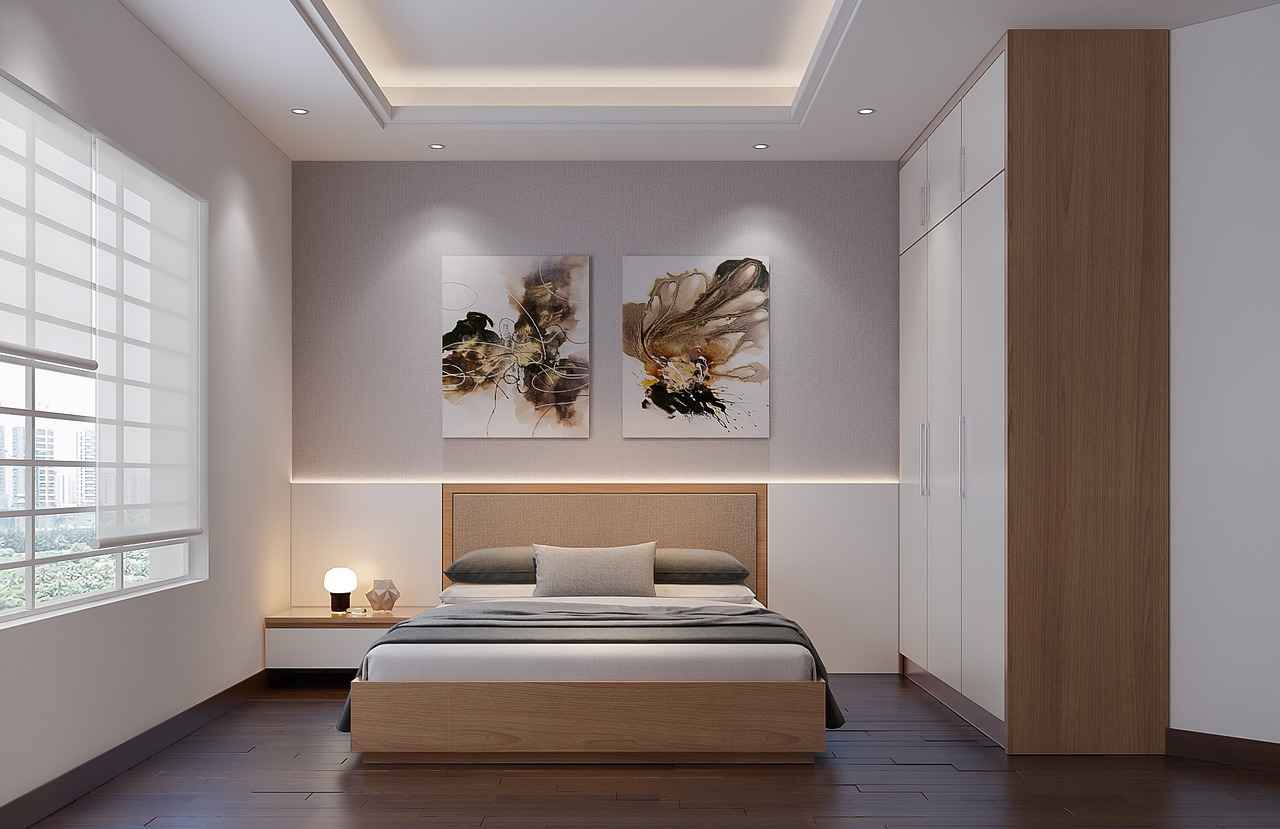
How to Maintain and Care for Your Room Divider?
Maintaining your room divider is essential for ensuring its longevity and aesthetic appeal. Whether your divider is made of wood, metal, fabric, or glass, each material requires specific care to keep it looking its best. Below are effective cleaning and care tips tailored to various materials and designs.
Regular maintenance not only extends the life of your room divider but also enhances the overall ambiance of your space. A well-maintained divider can serve as a focal point, adding character and style to your room.
- Wood Dividers: Use a soft, damp cloth to wipe down the surface. Avoid abrasive cleaners, as they can scratch the finish. For deeper cleaning, consider using a wood polish that nourishes the wood.
- Metal Dividers: Clean metal surfaces with a mild detergent and water solution. Dry immediately to prevent rust. For stainless steel, a specialized cleaner can help maintain its shine.
- Fabric Dividers: Vacuum fabric dividers regularly to remove dust and debris. For stains, treat them promptly with a fabric cleaner suitable for the material. Always check the care label for specific instructions.
- Glass Dividers: Use a glass cleaner and a microfiber cloth for streak-free results. Be cautious while cleaning to avoid scratches. For tougher grime, a mixture of vinegar and water can be effective.
In addition to regular cleaning, consider these general care practices:
- Avoid Direct Sunlight: Prolonged exposure to sunlight can fade colors and damage materials. Position your room divider strategically to minimize sun damage.
- Check for Wear and Tear: Regularly inspect your divider for any signs of damage, such as cracks, rust, or fraying fabric. Addressing these issues early can prevent further deterioration.
- Rearrangement: If you frequently move your divider, be gentle to avoid stress on the joints or hinges. This is especially important for folding or sliding dividers.
Different seasons can impact the condition of your room divider. Here are some seasonal tips:
- Spring: Conduct a thorough cleaning to remove dust accumulated over winter. Check for any moisture damage that may have occurred during the colder months.
- Summer: Ensure that fabric dividers are protected from humidity, which can lead to mold. Consider using a dehumidifier in damp environments.
- Fall: Inspect wooden dividers for signs of warping due to temperature changes. Apply a protective finish if necessary.
- Winter: Keep an eye on metal dividers for rust, especially in areas with high humidity. Regularly wipe them down to keep moisture at bay.
If your room divider requires more intensive care than you can provide, consider hiring a professional cleaning service. This is particularly beneficial for delicate materials or intricate designs that require specialized attention.
By following these maintenance tips, you can keep your room divider looking beautiful and functioning well for years to come. Regular care not only enhances its appearance but also contributes to a more inviting and organized living space.
Frequently Asked Questions
- What is the best way to measure my space for a room divider?
To accurately measure your space, start by determining the area you want to divide. Use a tape measure to find the width and height of the space. Make sure to account for any furniture or fixtures that might affect the divider’s placement. It’s always a good idea to measure twice to avoid any surprises!
- How do I choose the right size for my room divider?
The right size depends on your room dimensions and how you plan to use the divider. Generally, a height of 5 to 7 feet works well for most spaces, while the width should complement your room layout. Think of it like picking the right outfit; it has to fit just right to look good!
- What materials are best for room dividers?
Common materials include wood, metal, and fabric. Wood adds warmth and elegance, while metal offers a modern touch. Fabric can create a soft, inviting atmosphere. Consider your decor style and the functionality you need when making your choice!
- Can I use a room divider for more than just privacy?
Absolutely! Room dividers can define spaces, create temporary offices, or even serve as decorative elements. Think of them as versatile tools that can transform your living space in creative ways!
- How do I maintain my room divider?
Maintenance varies by material. For wood, dust regularly and use appropriate cleaners. Metal may need polishing, while fabric should be vacuumed or spot cleaned. Treat your divider like a cherished item; a little care goes a long way!
